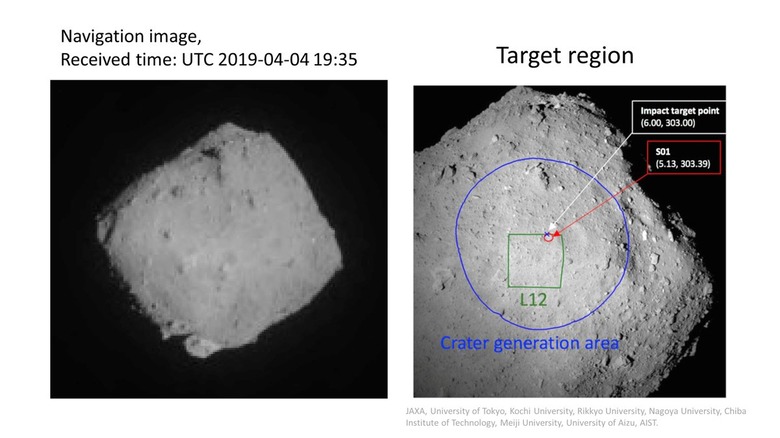Japan's Hayabusa2 Space Probe Just Dropped A Bomb On An Asteroid
Japan has dropped a bomb on a distant asteroid around 186 million miles away from Earth, with Hayabusa2 preparing to swoop in and sample the results of its controlled explosion. Launched in 2014, Hayabusa2's goal was to rendezvous with the distant asteroid Ryugu, collect data and even chunks of material from it, and then return them to Earth.
It was the start of a long journey, but one which so far has been impressively successful. After the late 2014 launch, Hayabusa2 reached the asteroid late last year, and landed its special hopping rovers on the surface of Ryugu in September. They started beaming back photos of the rock, helping guide the next stages of the exploration.
By February of this year, Hayabusa2 was ready to make its first, more aggressive attempt at sample collecting. It shot the asteroid with a small projectile similar to a bullet, and then gathered up the resulting detritus. Even that, though, was only the precursor to the main event.
This week, the National Research and Development Agency Japan Aerospace Exploration Agency (JAXA) successfully deployed the SCI, Small Carry-on Impactor. That somewhat vague name actually refers to a specially-designed "bomb" created just for Ryugu.
It consists of a conical structure filled with explosives, into which a roughly 4.4 pound copper lump is fitted. That lump – known as the "Liner" – is then fired by the explosives at close range to the surface of the asteroid, at a speed of around 1.2 miles per second. The result, if all goes to plan, should be a crater that Hayabusa2's probes can sample from.

JAXA used pure copper for the Liner, so that it could be easily distinguished from other materials found on the asteroid. A deployable camera, meanwhile, was used to monitor the SCI in action. Photos showed what looked to be ejection from the surface of Ryugu, leading the agency to believe that the test had gone as planned.
"Hayabusa2 is operating normally," JAXA said in a statement today. "We will be providing further information once we have confirmed whether a crater has been created on Ryugu."
Though it's groundbreaking in that this is the first time such a process has been carried out on an asteroid, the potential for unlocking space secrets is even greater. JAXA's goal is to use materials gathered from within the asteroid's structure to help understand the early formation of the Solar System, potentially billions of years ago.
